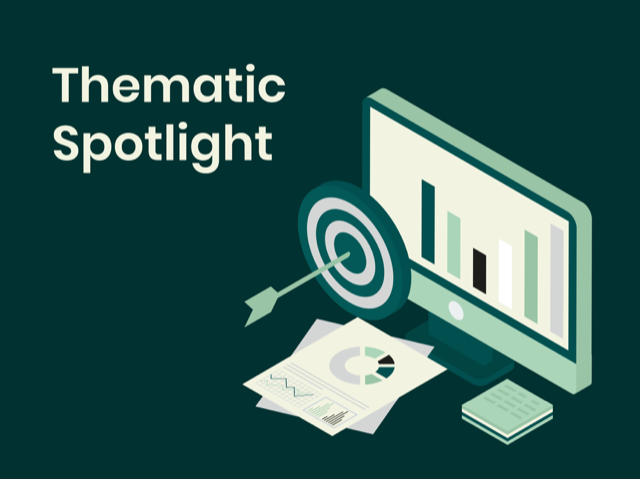
This Website allows the sending only of so-called “first-party” analytic cookies to guarantee its technical functioning and to analyse aggregate data on Website visits. By closing this banner, or clicking on any element in the web page, the use of these cookies is accepted.


Marco Mencini, Head of Research of Plenisfer Investments SGR
In a comment published last February we estimated that the price of uranium could reach $60 per pound by the end of the year. This threshold was already exceeded in the first days of September, due to a growth in spot prices of around 30% since the beginning of the year. This trend places uranium as one of the best performing raw materials of 2023 (Source: Bloomberg).
While the 2006-2007 uranium rally - which took the price as high as $137 a pound - was driven primarily by hedge funds, the current bull phase is primarily driven by forward purchases of utilities and select producers. it is therefore healthier, sustainable and far-reaching.
In particular, utilities have reappeared on the market after two years of substantial absence. In the first half of the current year, utilities signed long-term uranium purchase contracts for 107 million pounds, a value at a 10-year high and compared with 125 million for the whole of 2022 (Source: 2022 Term Contracting Review). This trend is expected to continue in the coming months supported by utilities' need to manage depleting inventories: it is estimated that the inventories on which US utilities rely will only cover their needs for around two years, while those of European utilities for around three years (source: UxC). Asian utility inventories, particularly Japanese and Chinese, are more difficult to quantify, but overall, we estimate that utilities will need to increase purchases to meet future needs from the current 150 million pounds per year to over 250 million, a quantity that leads to a cumulative global supply deficit estimated at 1.5 billion pounds by 2040.
This deficit will be supported on one side by a limited supply, on the other by a demand for uranium which we estimate will structurally increase by 3/5% per year, in light of the expected extension of the life of existing nuclear plants and the expected new projects.
Governments around the world are, in fact, increasingly favourable to nuclear energy, considered a source of zero-emission electricity and increasingly a solution to the risks to energy independence and security. Japan itself, after having shut down its 33 power plants after Fukushima, has already reactivated 11 of them and intends to bring them back to full activity within the decade. In the USA, the ADVANCE Act was approved last July to support the national nuclear industry, for which 8 billion dollars have been allocated. Europe has formally recognized the role that nuclear power can play in achieving the goals of “Zero Net Emission”, set for 2050 and some countries such as France have extended the life of already operational power plants. Nuclear energy production plants are constantly growing: today there are 436 active reactors in the world, for a total of approximately 390 GW of electricity produced, equal to 9% of global production.
In light of the decarbonisation trend combined with the need to increase electricity production (which IEA estimates must double in the next decade), even assuming that the contribution of nuclear power to energy generation remains stable, it appears clear that energy production from nuclear energy is destined to double. And in fact, 59 traditional plants are already under construction and a further 111 have already been approved, while another 321 are in an evaluation phase. Of all these new and potential plants, almost 50% will be built in China (Source: World Nuclear Association).
An important contribution to the production of nuclear energy could also come from new modular reactors (SMRs, Small Modular Reactors): 76 are already under development, mainly in the USA, Russia and China, and it is estimated that the SMR market could reach to be worth 1 trillion dollars by 2050 (Source: Barclays Research) in light of the versatility of this solutions that will be able to supply energy even to individual production plants.
Several factors, both structural and contingent, are complicating the already limited supply scenario.
Among the structural factors, there is the high concentration of uranium production with consequent geopolitical risks: 40% is extracted in Kazakhstan, while 40% of enriched uranium - i.e. the fuel for nuclear plants - is produced in Russia. Furthermore, starting new mines takes around a decade and supply will only be able to increase slowly. This factor adds to the lack of investments on this front in the last twelve years. These investments were reduced of over 80% (source: S&P Global Market Intelligence) both due to the combination of the increase in extraction costs with a price of uranium, which in average was around $20 per pound, both from the disfavour towards nuclear energy generated by the tragic events of Fukushima.
The uranium deficit will also be supported by the shrinking of the secondary market that is essentially made up of countries’ strategic reserves of uranium. These strategic reserves today are at their lowest level (500 million pounds, source: WNA) after having satisfied around 10% of demand through the uranium coming from disarmament of nuclear weapons for a decade.
Among the contingent factors that affect supply, we put in evidence:
In light of the supply and demand dynamics and all the factors described, at Plenisfer we think that the bullish phase of uranium - which has been going on for three years - will be long-term: we expect it to continue for a decade and potentially even longer depending on the speed with which producers are able to expand the offer.
In particular, we believe it is reasonable to assume that within the next two years the price of uranium could exceed the marginal cost of production, currently equal to 75/80 $ per pound, according to a dynamic already observed for all other energy raw materials, none of which has a price today lower than its marginal cost.
This trend could accelerate if financial investors return to the market as happened during the rallies recorded in the price of uranium between 2000 and 2010.
Disclaimer
This analysis relates to Plenisfer Investments SGR S.p.A. (“Plenisfer Investments”) and is not a marketing communication relating to a Fund, investment product or investment services in your country. This document does not constitute an offer or invitation to sell or buy any securities or any business or enterprise described herein and does not form the basis of any contract.
Any opinions or forecasts provided are accurate as of the date specified, are subject to change without notice, do not predict future results and do not constitute a recommendation or offer of any investment product or service. Past performance does not predict future returns. There can be no assurance that an investment objective will be achieved or that there will be a return on capital. This analysis is addressed exclusively to professional investors in Italy pursuant to the Markets in Financial Instruments Directive 2014/65/EU (MiFID). It is not intended for retail investors or US Persons, as defined in Regulation S of the United States Securities Act of 1933, as amended.
The information is provided by Plenisfer Investments, authorized as a UCITS management company in Italy, regulated by the Bank of Italy - Via Niccolò Machiavelli 4, Trieste, 34132, Italy - CM: 15404 - LEI: 984500E9CB9BBCE3E272.
All data used in this analysis, unless otherwise indicated, is provided by Plenisfer Investments. This material and its contents may not be reproduced or distributed, in whole or in part, without the express written consent of Plenisfer Investments.
Plenisfer Investments SGR S.p.A.
Via Niccolò Machiavelli 4
34132 Trieste (TS)
Via Sant'Andrea 10/A, 20121 Milano (MI)
info@plenisfer.com
+39 02 8725 2960
Contact us at info@plenisfer.com
Please read the KIID as well as the Prospectus before subscribing. Past performance is no indication of future performance.
The value of your investment and the return on it can go down as well as up and, on redemption, you may receive less than you originally invested.
© Copyright Plenisfer Investments onwards 2020. Designed by Creative Bulls. All rights reserved.
